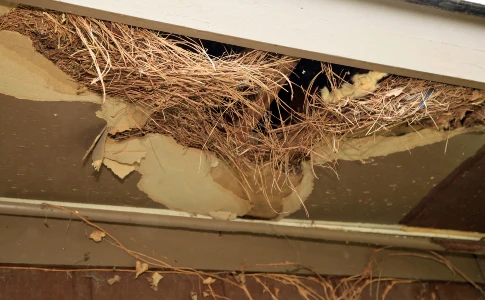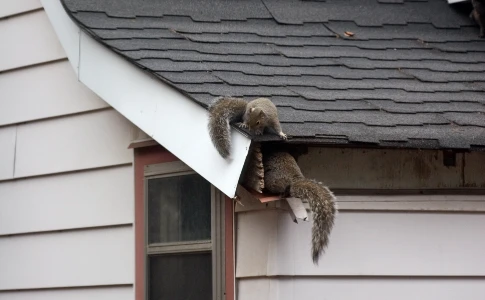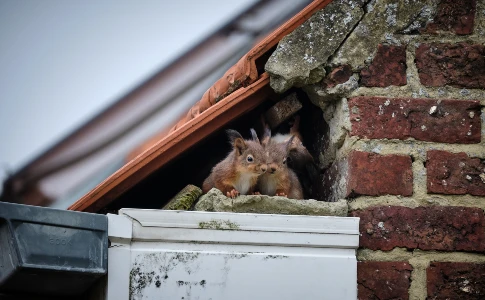Squirrels in the Attic

Signs You Have a
Squirrel Problem
- Entry Points: Detectable holes or gnawed areas indicating squirrel access.
- Evidence of Chewing: Gnawed wood and wiring might be strewn about your attic.
- Distinctive Noises: Daytime is squirrel time. Their daytime activity sets them apart from other nocturnal pests.
- Droppings: Fresh squirrel droppings appear as dark brown, oblong pellets, gradually lightening to gray with age.
- Nesting Materials: Discovering items like sticks and leaves suggests squirrels have made themselves at home.
Why Choose Dixie Exterminators for
Squirrel Removal
- Detailed Inspection: Our trained team meticulously inspects your attic, spotting all squirrel entry points.
- Expert Exclusion Techniques: We utilize state-of-the-art excluder traps or one-way doors. These ingenious devices let squirrels exit but bar their return.
- Comprehensive Attic Sealing: Our commitment doesn't end at squirrel removal. We also ensure your attic is fortified against future invasions by sealing potential openings.


The Damages Squirrels
Can Cause:
Squirrels might seem cute and harmless, but they can wreak havoc in your attic by:
- Gnawing on structural elements like roof timbers.
- Damaging vents, chimneys, and insulation.
- Creating a serious fire risk by chewing through electrical wiring.
Additionally, as these critters come and go, they could introduce more pests or foreign materials into your home.
Squirrels in the Attic FAQ
How can I tell if I have squirrels in my attic?
Common signs include noises during the day (especially in the morning and evening), scratching sounds, droppings, evidence of chewed wires or wood, and finding nests made of leaves and twigs.
Why are squirrels attracted to attics?
Attics offer a warm, dry, and safe environment for squirrels, away from predators. They provide a good nesting site, especially during colder months or breeding season.
Are squirrels dangerous to have in the attic?
Squirrels themselves aren't typically dangerous to humans, but their presence can pose risks. They can chew through wires, which can create fire hazards, and they can damage insulation, wood, and belongings stored in the attic. They can also carry parasites like fleas and ticks.
How do squirrels get into the attic?
Squirrels are excellent climbers and can jump quite a distance. They often enter attics through gaps or holes in the roofline, eaves, vents, or chimneys.
What's the difference between a squirrel's nest and a rat's nest?
Squirrel nests, or "dreys," are often larger and made of leaves, twigs, and other natural materials. They may be found both inside and outside the home. Rat nests, on the other hand, tend to be made of shredded paper or other soft materials and are often hidden within insulation or wall voids.
How can I prevent squirrels from coming back?
The best way is to ensure that any entry points are securely sealed. Trim tree branches that are close to the roof, install chimney caps, and use metal mesh to cover any vents or other potential entry points.
Contact Us for Squirrels in the Attic Services
Let us remove squirrels from your home. Give us a call today!
770.424.1300